“Bathing suit, towel, extra set of warm clothes, binoculars, coffee, snacks?”
“Check!”
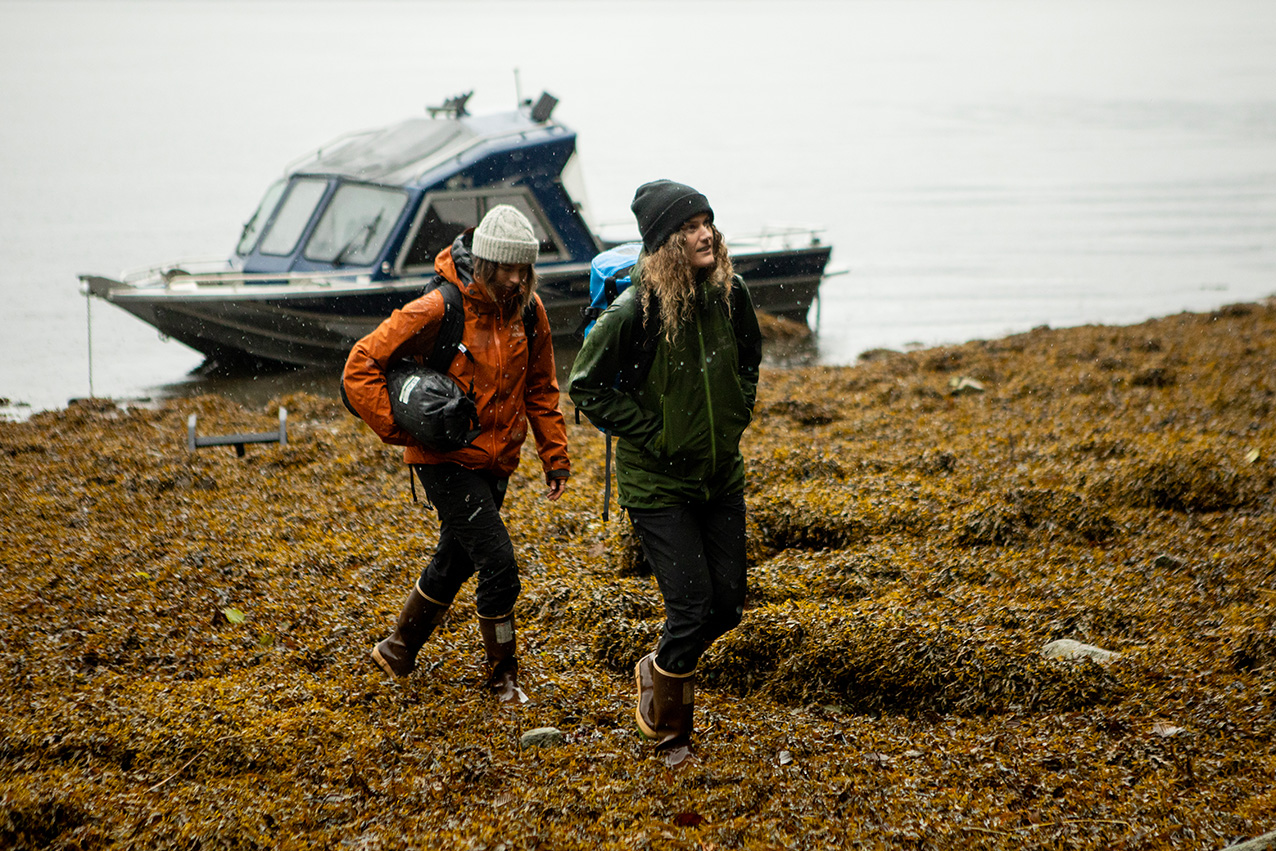
3-8mm of rain per hour made for the “nicest” day to get on the water all week. Lined head to toe in Goretex - a giveaway that this crew was more adapted to rainy days spent in the mountains than in rubbers on a boat- Sarah, Danika and I headed for the dock. Kitimat and Kitamaat Village mark the furthest north point of the Kitimat Sound and the terminus of the Douglas Channel. Beyond the visible shorelines, the Douglas Channel bends, weaves, splits, and connects into straights, narrows and inlets before emerging from the tightly mountainous constraints into the open Pacific Ocean. The expanse of the waterway hosts deep indigenous history, an abundance of wildlife and some very special places - a network for those familiar and a draughting yet curious maze for us to fathom.
Our objective for the day; visit four hot springs via boat. The local indigenous nation known as the Haisla utilized the entire area - not only for fishing, hunting and gathering but also for rituals. The remote boat access - only hot springs were and are used by the Haisla as a hygienic, medicinal, ritual and recreational area. With excitement, we tossed our gear into various waterproof bags and headed towards the water.
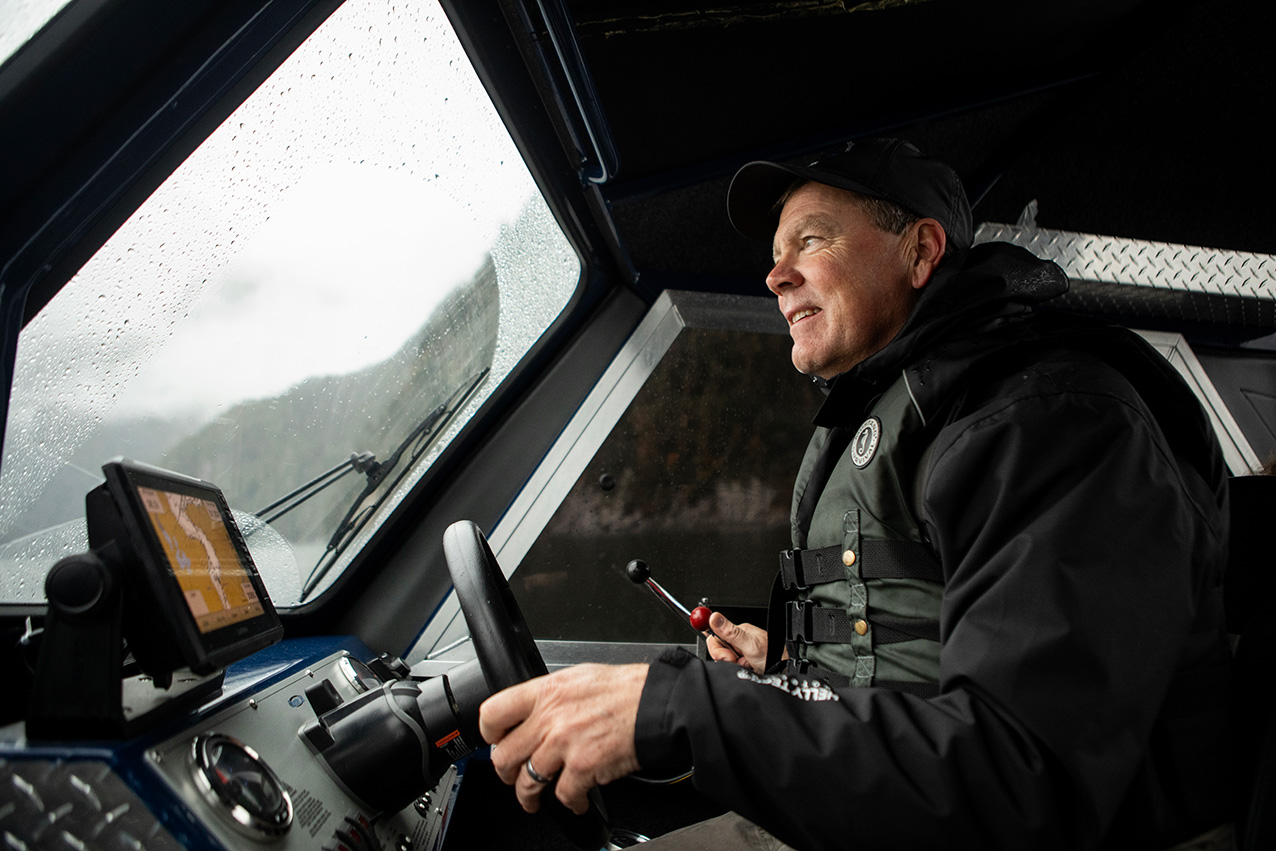
A friendly wave greeted us as we approached the singular vessel tied to the dock just beyond the boat launch. It was clear, the weather wasn’t enticing many, but the wet couldn’t smother our excitement. Aboard the 22 - long Yukon Thunder Jet, Rob Bryce owner and operator of Northern BC Jet Tours, strategically placed our gear in dry places and gave us life jackets - a welcome layer that offered an extra dose of warmth and cozy for the late fall PNW journey. Having met Rob on previous river primary excursions, I already had an established trust for his agile boat maneuvering, a respect for his approach to remote places and a hunger for his location - specific stories. He is equal parts approachable and professional, not to mention a wealth of knowledge. Not just boat or water based knowledge, but land use history, and cultural history - as a previous Coordinator and Instructor at the University of Northern British Columbia Rob specialized in natural resource management, outdoor recreation and safety. Undoubtedly, Rob is no stranger to the awe of the places he frequents, but no matter how many times he sees a grizzly or a pod of whales in a day or a week - each experience never loses its lustre and his excitement to share is contagious.
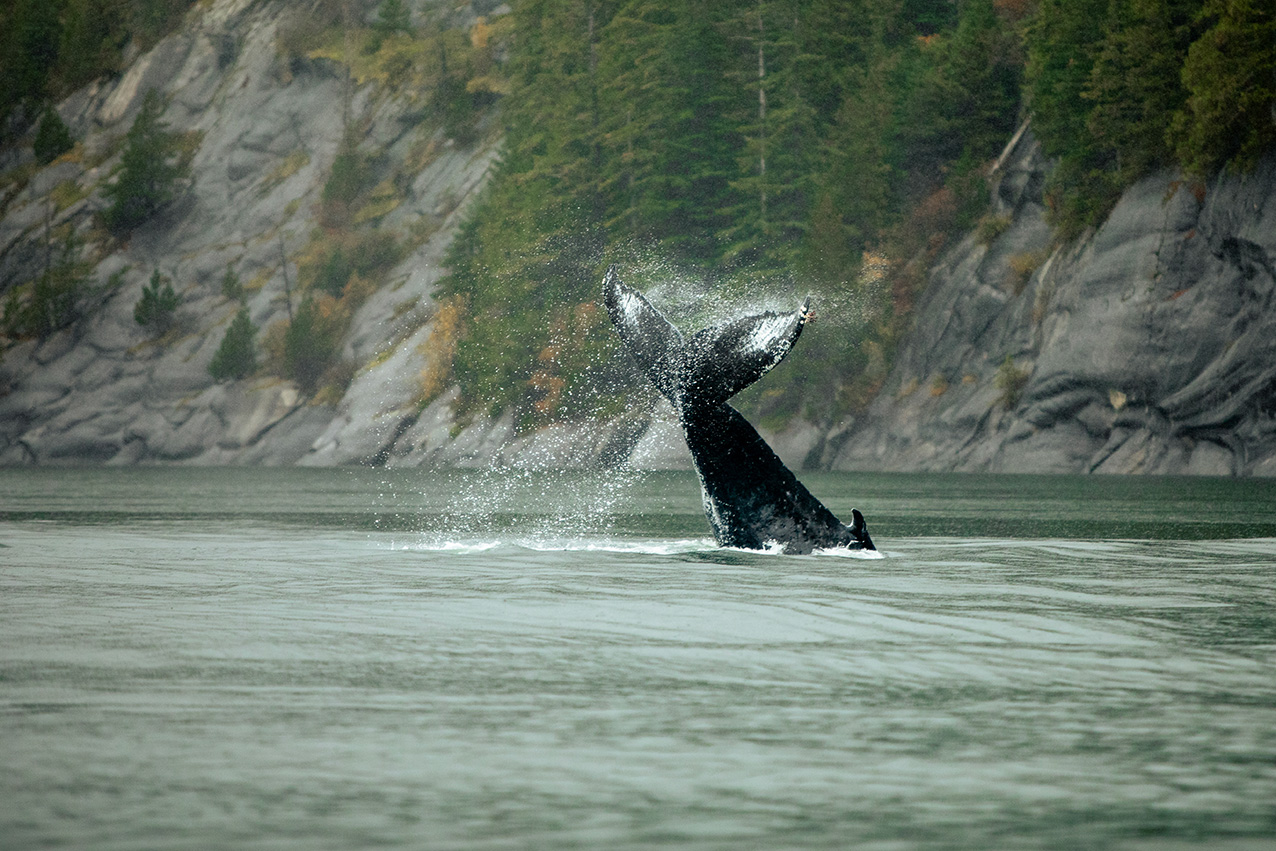
A few sips of coffee into the journey and we spotted our first humpback whale. A pace that would continue most of the day. Some breached, others slapped their fins, a few gave tail waves and many kept their course with a destination unknown to us. Each encounter was filled with awe, certainly not a regular day for us mountain folk, which is exactly what we were after. We witnessed roughly 21 humpbacks, surely there were more, but with sizable whitecaps, and low lingering clouds, it was easy for them to camouflage into the rough waters and moody atmosphere. No doubt about it, without the seasoned eyes of Rob, we would have missed at least 50% of them.
Jumping out of the beached boat into calf - deep water, we waded on the slippery tidal shores and made our way to a little dose of rainy - day paradise. Weewanie is a provincial park that hosts a small hot spring shelter, campsite, toilet and picnic table. Inside the shelter, a series of cement tubs captured the springs into a soakable retreat. We stripped our ‘tufs and soaked our legs while listening to the rhythmic rain on the metal roof. If it weren’t for a full agenda, we could have easily spent the day here.
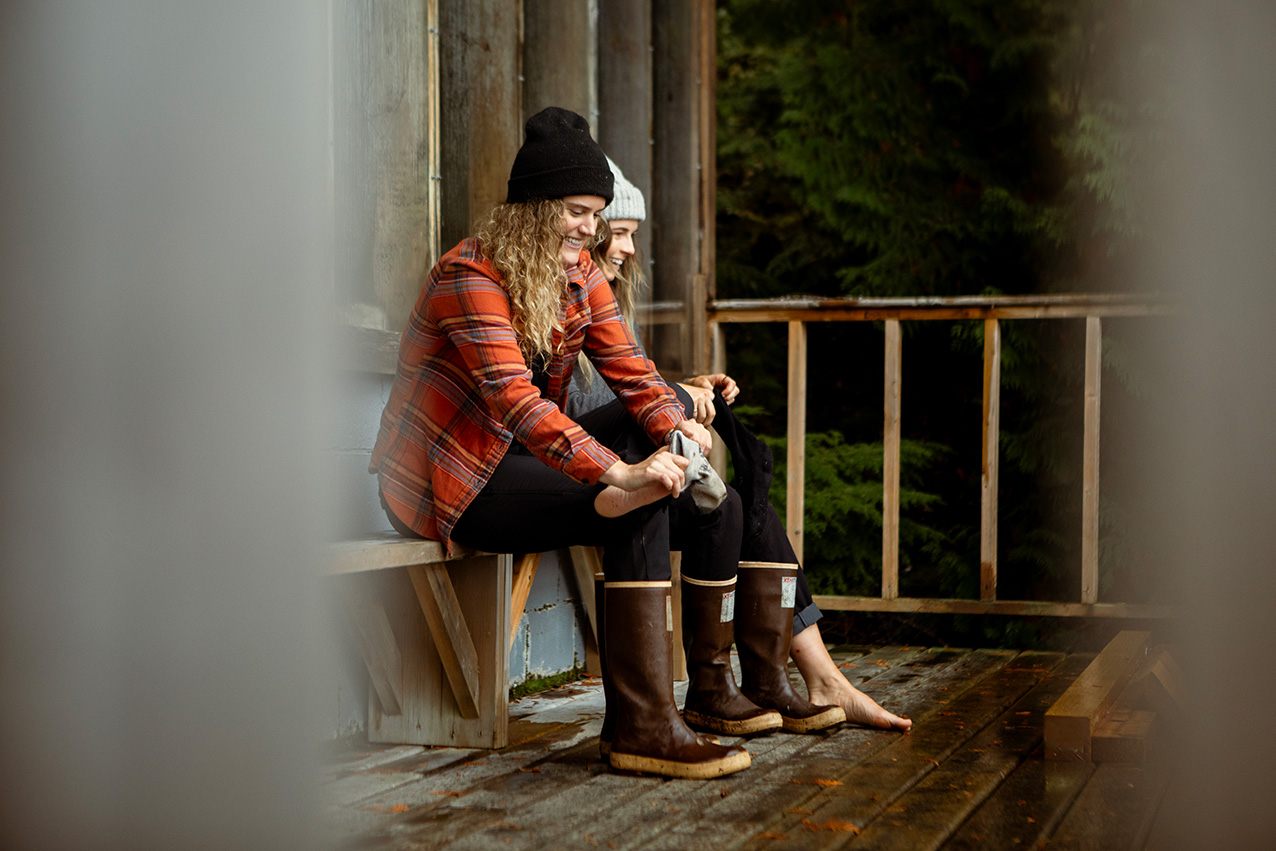
Nearing our next destination, cute round teddy bear ears appeared parallel to the boat. Moving quickly, it came closer and exposed its hump, curiosity and confidence as it gracefully swam toward the inhospitable shoreline. Without a splash and without panic it maneuvered up the steep and slippery slope. No panting, no resting - sheer stoicism. Grizzly bears aren’t a new sight to me - I grew up in the Rockies and later lived in northwest Montana making them not such a rare specimen, but this was the first time I’d witnessed one swimming in the ocean. It was as special as it sounds, undoubtedly this moment is now etched in the “awe” department of my memory bank
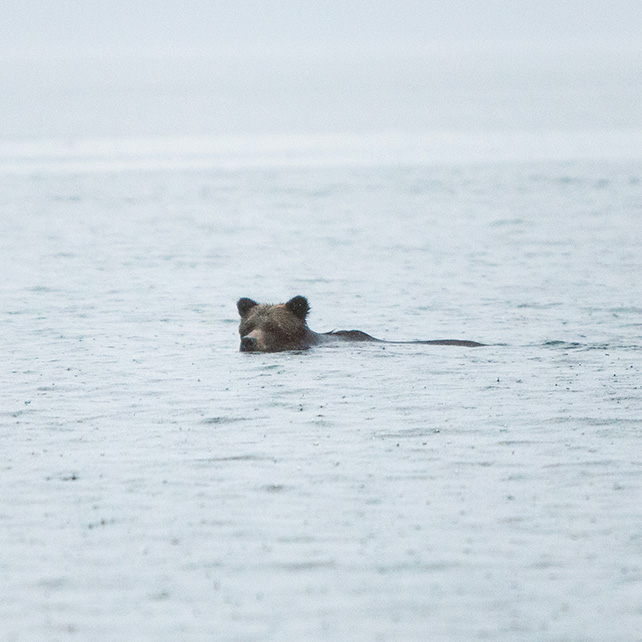
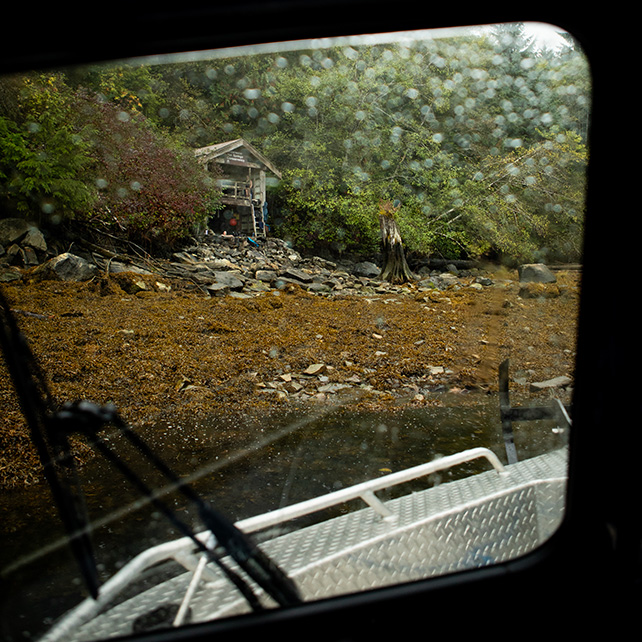
And about that “next destination”, it was a dream - my favourite of the day. Tubs built from native rock perched right on the shoreline. An open structure provided an overhead changing area while partially covering some of the springs. Found buoys, lures, and rope hung from the ceiling nodding at the frequent fishers that visit this remote spring. The views admired from the tranquil tubs included an untouched estuary, an island in the distance and lively act by the local seals and birds in the bay. An obsolete sanctuary for the body and mind.
Nearing our third hot spring, we entered an area where the steep mountains poured straight into the ocean. The rain amplified the many existing waterfalls and created temporary ones. Although visibility was limited, the sound felt alive, and the elements powerful. The third hot spring-well, it’s a bit of a secret that one. A destination best shared with one of the few who know its unmarked location. A special experience that Rob is grateful to share - which makes me wonder how many little secrets Rob has up his sleeve, I have a hunch it’s more than I can imagine
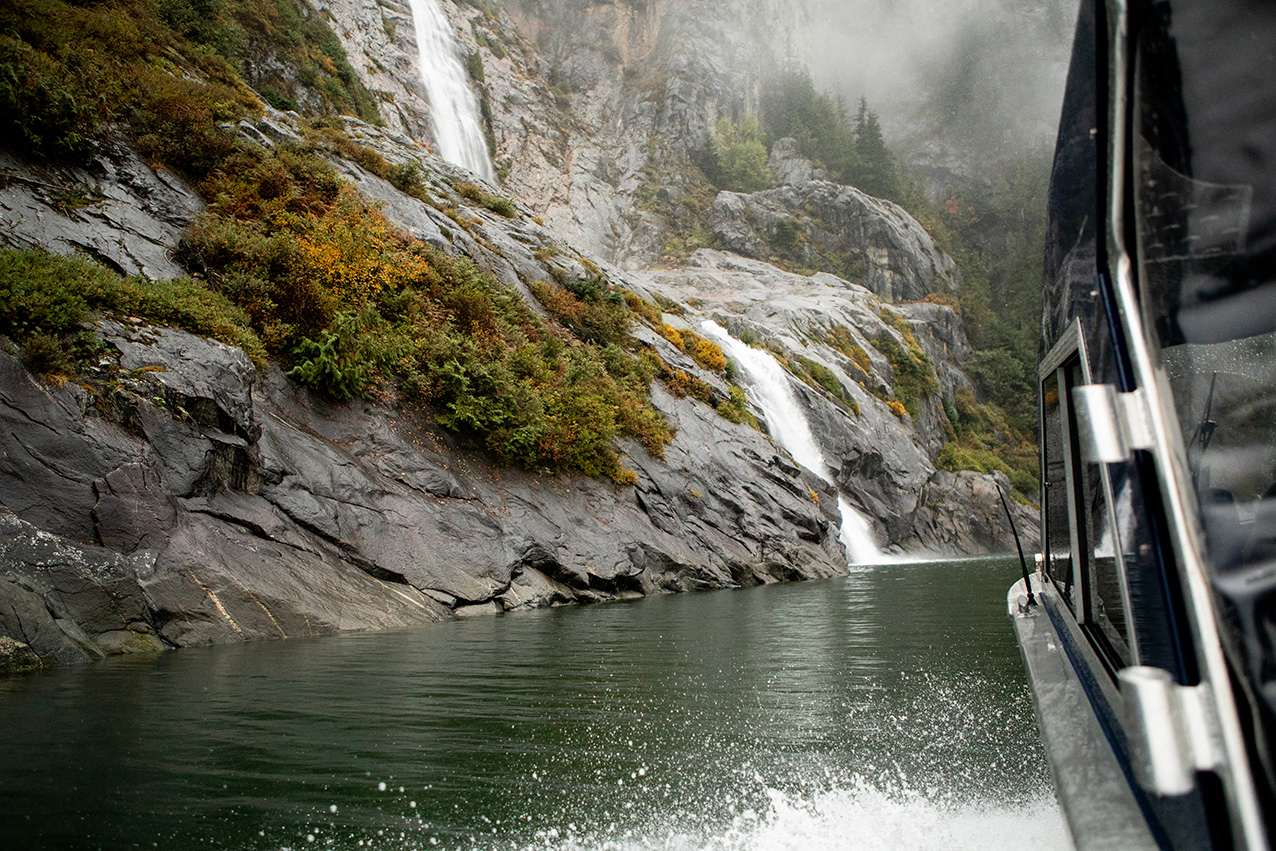
Content and curious, my gaze was glued to the horizon for whales and an indication of where we may be headed next as I see Rob navigating towards an inlet and ask “is the spring in this bay?” - Rob smirks, and says it’s upstream. I see him switch his mental navigation to river mode as we turn towards the flowing fresh water. Eyes open for grizzlies fishing, we don’t see any on route or at the falls that came into view as we round a corner - which in this case is a good thing because we were about to explore this area by foot. Anchoring in tall bush well above my line of sight, we follow a tiny and well-saturated trail that follows a small creek that spills into the river we just ventured up via boat. Steam in the distance appears and we gravitate towards it. Stepping into the creek, we felt the heat through our boots, we were standing in a hot spring. Once again we kicked off our boots and enjoyed the warm wade as we explored the running water for hot spots while letting out hoots, hollars and giggles from enjoyment that also served as a warning for bears that we were in their habitat. This was the perfect “last” spot to our day adventuring the coast, it wasn’t the picture-perfect already established hot springs we had previously visited, but it was an adventure. It imprinted the fact that there is still so much to explore and see.
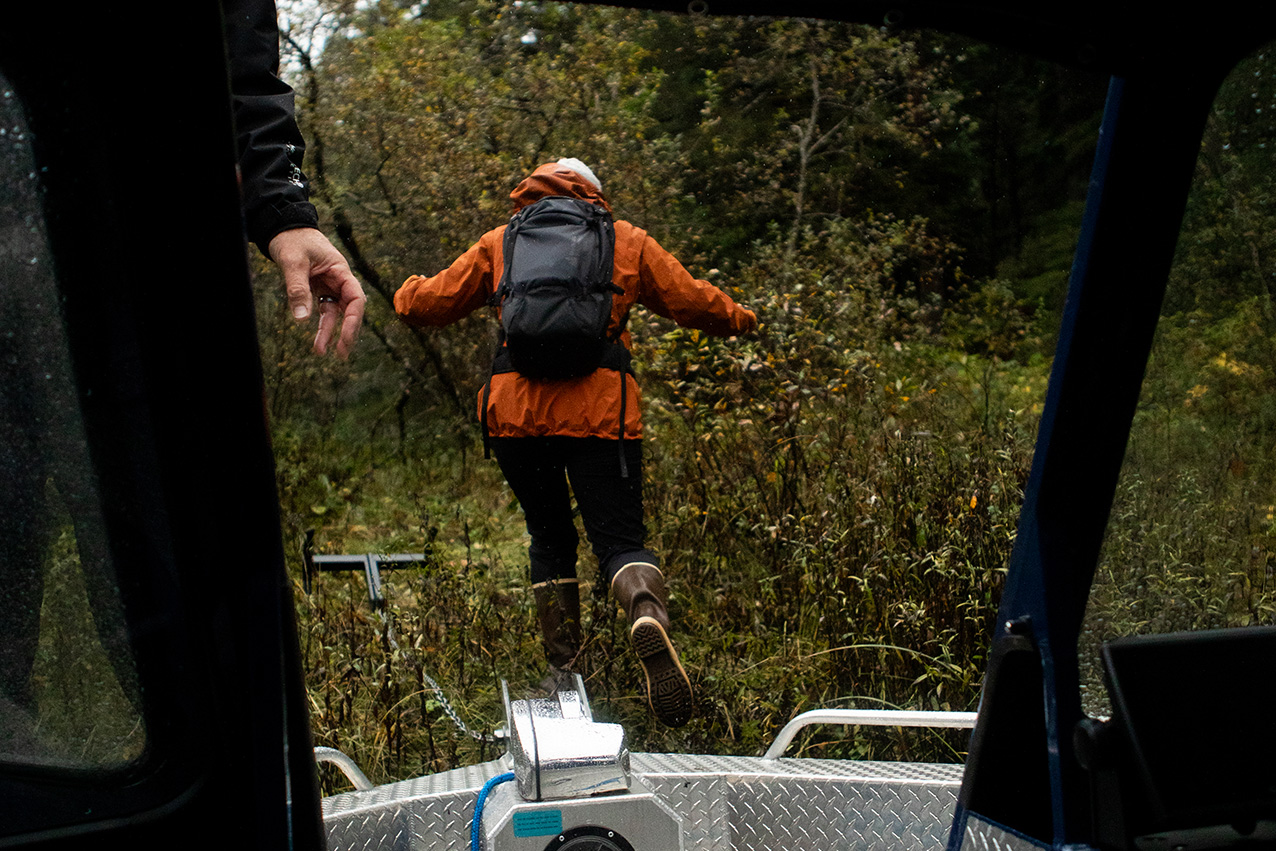
Whether an established park, a sacred indigenous place or an unpublished treasure in an off-the-beaten-path nook, the West Coast is full of life. Marineline, wildlife, and life within the landscape. It’s easy to see why this coast network is the heartbeat to the way of life of the Haisla. Grateful for the experience to have gained a first-hand appreciation for this special place.
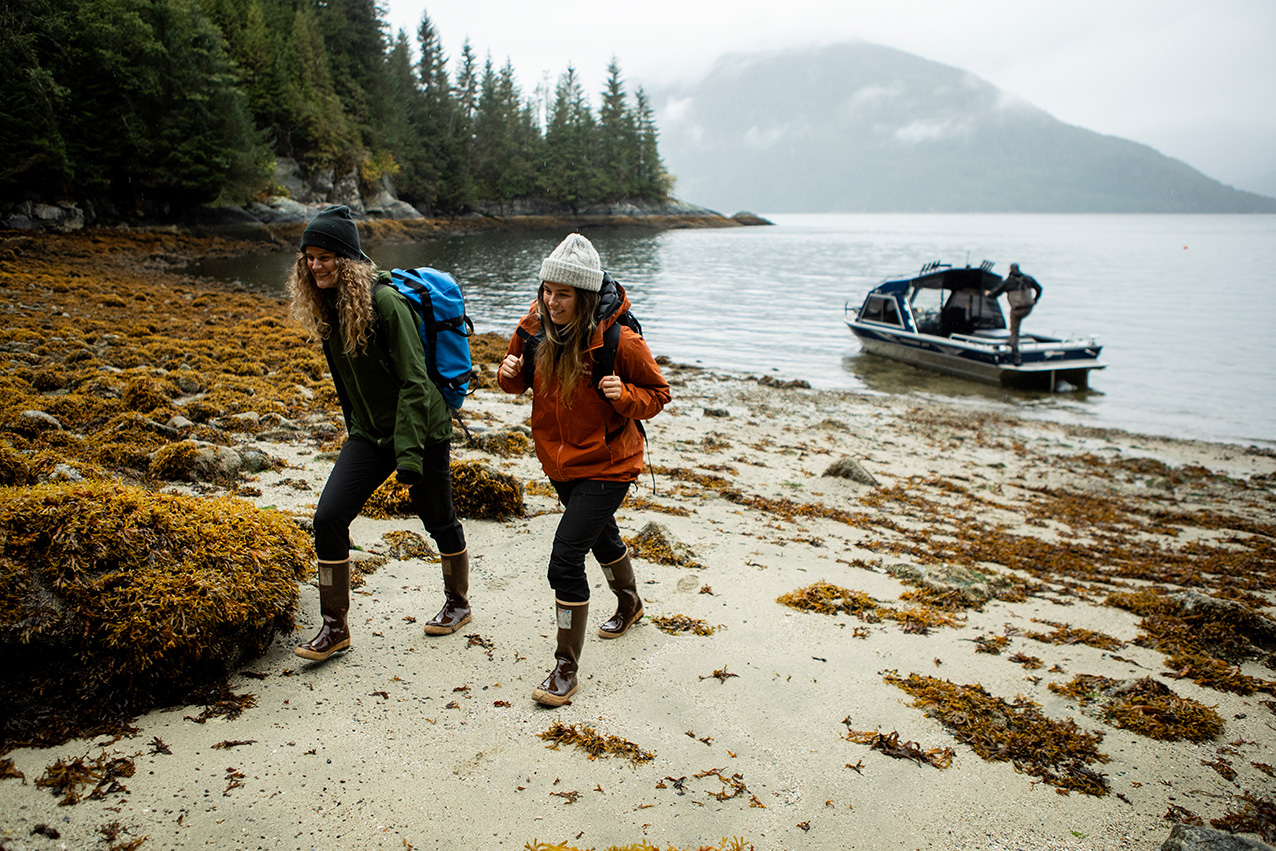
PS: There is a good chance Sarah’s colour and landscape studies will transpire into a coastal art series inspired by this trip. Keep tabs on this Smithers-based artist here.
 United States
United States
 Canada
Canada
 United Kingdom
United Kingdom



